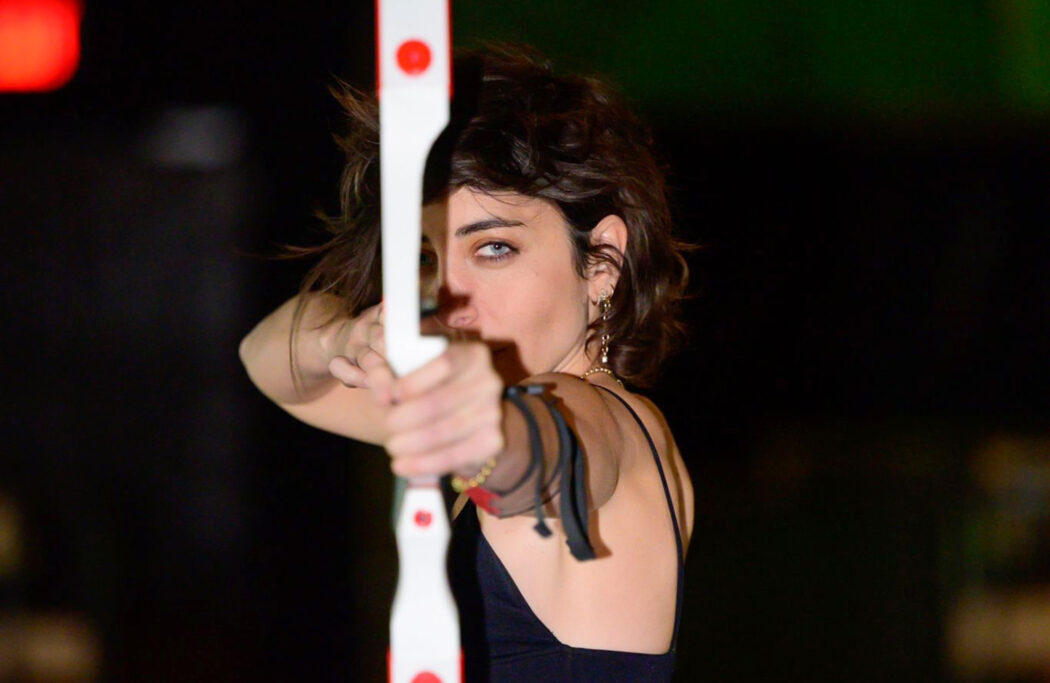Statistically safer than bowling
Katniss Everdeen has nothing on Kendall Tichner. For one, we never saw Katniss shoot an arrow at a balloon that exploded into a spectacle of colorful feathers. Just sayin’. We imagine Kendall was the kind of 11-year-old at camp that was actually able to come within five feet of the target while the rest of us were playing the imaginary violin with our bow and arrows. This is possibly why she’s the founder and CEO of Wild Captives, an urban outdoor sporting company that makes archery accessible to anyone, anywhere. But it probably has more to do with the fact that she’s a badass influencer and a go-getter-type human who knows how to get shit done. We’d bet money on number two. We sat down with Kendall herself to have a candid conversation on what it means to be a woman in archery and how she’s breaking down barriers in an ancient sport.



When were you first introduced to archery?
Kendall Tichner: Like a lot of people, I was first introduced to archery when I was a kid at summer camp. But I wasn’t good until recently when I rediscovered the sport as an adult and figured out the right equipment to use (after much trial and error). Which is part of why I launched the Wild Captives Archery Kit for beginners—to take away the barriers of entry so more people can get started and enjoy archery.
What are two things you’d want other people to understand about picking up a bow and arrow?
KT: Number one, it’s easier than you think to get started. Number two, prepare to feel the most powerful you have ever felt. And a bonus, archery is statistically safer than both bowling and golf!


Can you tell us what it means to you for women to get into archery?
KT: Archery has a deep history of female empowerment—from ancient gods like Artemis being depicted with a bow and arrow to the fact that it was one of the first sports to allow women to compete in the Olympics. It’s an ancient martial art representing peace, simplicity and oneness. For some reason, in America, archers are mainly male hunters. I hope to widen the scope of who regularly participates and make it as easy as possible for people of any gender to take up empowering outdoor hobbies like archery.
Where can people go to learn?
KT: I started with a hay bale in my backyard. If you have the space, you can set up a safe archery range at home. If not, you can visit a local archery range. Unknown to most, there are about 10,000 archery ranges in the US, both indoor and outdoor, and many of them are free.

How did Wild Captives start to pick up in popularity?
KT: TikTok and timing played a significant role. Apocalyptic fantasies appeal to us physiologically by tapping into our desire for simpler living. Popular media like Survivor, Alone, Yellowjackets, The Hunger Games and Game of Thrones use narratives like this to help people feel as if they’re preparing for the worst while depicting ordinary people discovering their heroic potential.
When I started posting on TikTok in 2020, I had no idea my content would blow up like it did. But it turns out that seeing a real person who can make fire with sticks and shoot things out of the air with just a bow and arrow just hits something primitive in viewers. It’s like a real-life video game. Plus, I’m a feminine girl with surprisingly precise aim, which makes for unexpected content.


Three songs on your playlist right now?
KT: Gah, I like folky sad girl music. This morning on the train I’m listening to “Crane Your Neck” by Lady Lamb the Beekeeper, “Hunter” by Jess WIlliamson and “Cut your bangs” by Girl Pool
Is there another sport or hobby that you think is misunderstood or misrepresented?
KT: I’m fascinated by all aspects of the industry that would be referred to as “scouting.” I created Wild Captives to be a “Boy Scouts without the Boy Scouts…for adults in cities.” Our goal is to reconnect people with lost hands-on practical skills like reading a map, plant foraging, birdwatching, animal tracking, woodcraft and more. These accessible activities give people a sense of belonging, empowerment, awareness and connection to the world around them.
What do you think the perception of archery is outside of the US?
KT: Archery in other countries is a daily practice, a martial art and a way of life. The Kingdom of Bhutan has made archery their national sport. Almost every village has an archery range, and children begin archery around the age of seven. South Korea is considered the country where archery is most popular. Archery is embedded in the culture from an early age, and celebrities get involved in archery competitions as representatives. Japan is another country where the sport has a historically rich background. They have a huge traditional respect for archery.
You seem to spend quite a bit of time outdoors, what’s in your essential survival guide?
KT: In a real survival situation I’d bring practical tools like waterproof matches, a knife, a tarp, etc. But for my NYC walk-in-the-park “everyday” survival guide, I always have my pup Rio, a GOOD pair of binoculars and my journal.

